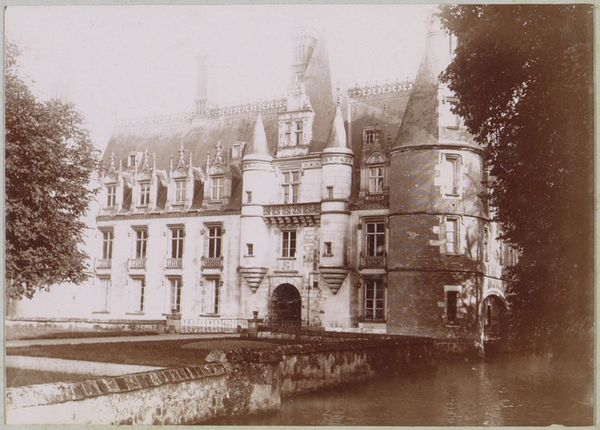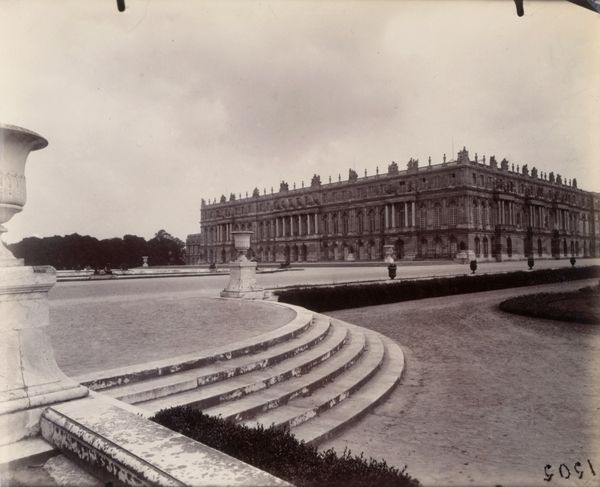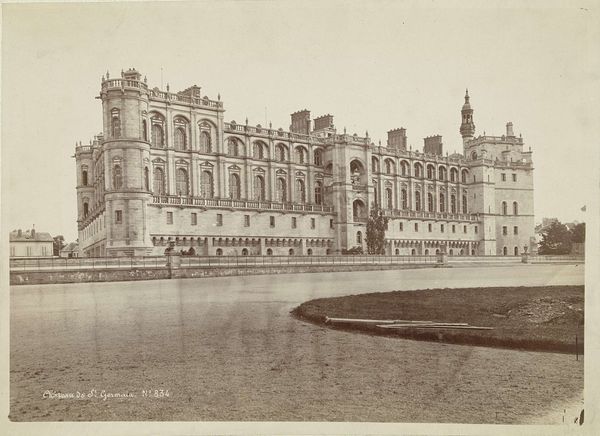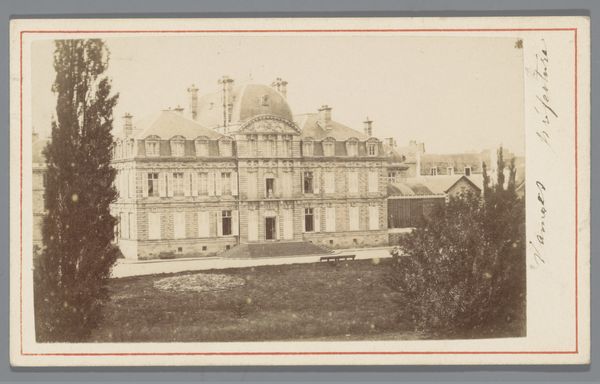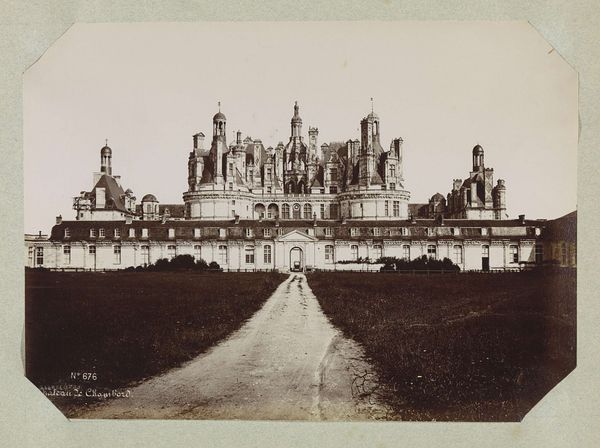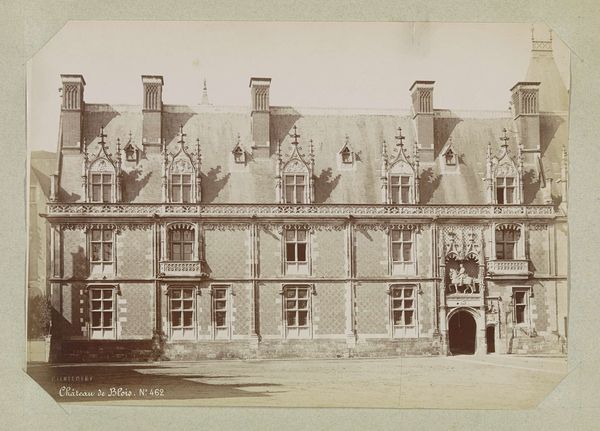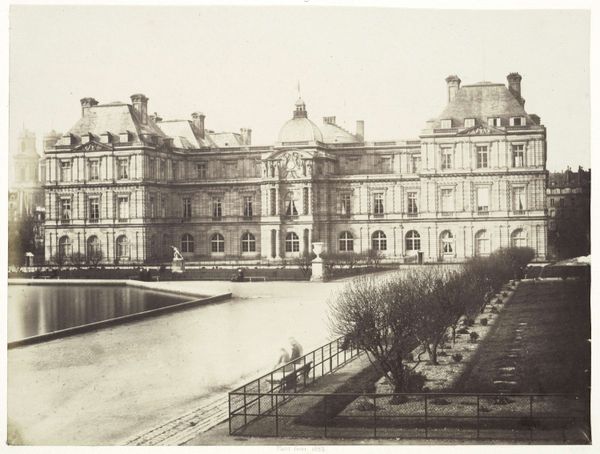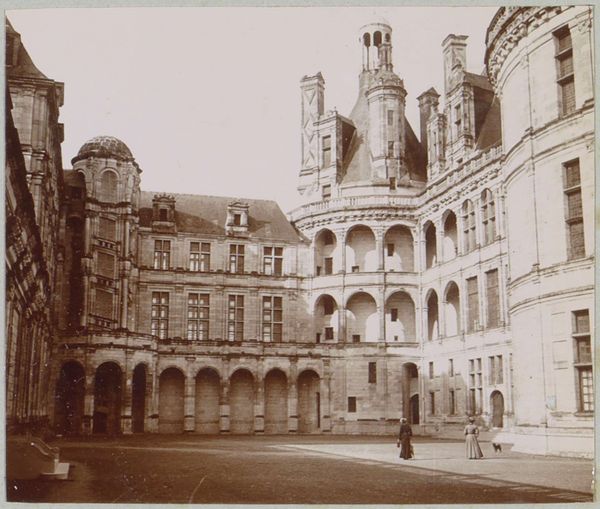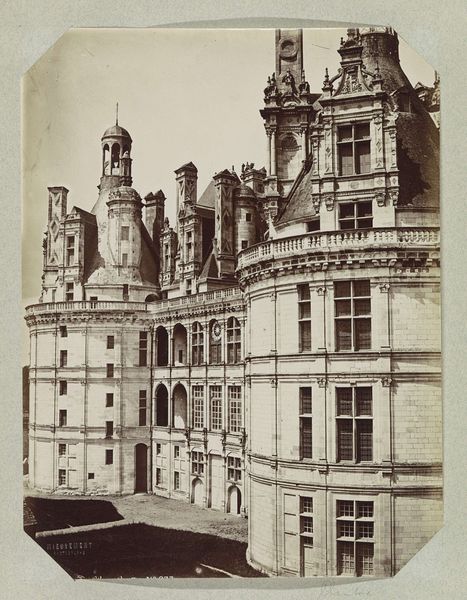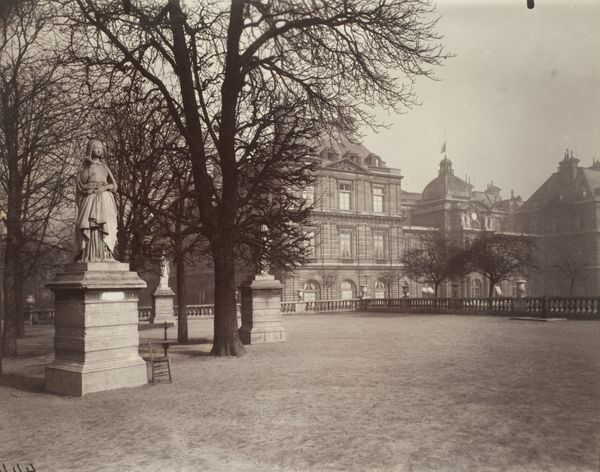
print, photography, architecture
# print
#
landscape
#
photography
#
architecture
#
realism
Dimensions: height 70 mm, width 82 mm
Copyright: Rijks Museum: Open Domain
Curator: Here we have a photograph from 1904, "Gezicht op het kasteel van Chambord", held here at the Rijksmuseum. What strikes you initially about it? Editor: The overwhelming density, all those towers and turrets, a gothic fever dream built in stone! The light emphasizes texture and materiality so strongly, almost obliterating the structure behind. It feels less like a regal residence and more like a factory producing fairy tales. Curator: Interesting point. Chambord was commissioned by King François I in the 16th century, reflecting a significant shift in power dynamics and royal iconography. Photography in 1904 had evolved, allowing a detailed capture of architectural majesty while simultaneously democratizing access to these formerly exclusive sites. How do you think this medium shapes the interpretation? Editor: I’m intrigued by how photography itself becomes a manufacturing process. Light, chemistry, labor in development and printing; the image is an artifact of specific industrial practices and a means of mass dissemination. And given its inherent indexicality, the photograph seems to emphasize the castle's concrete presence. Curator: Absolutely. It brings the stone, the scale, and the detail into the domestic sphere in a new way. I find it compelling how photography enables and frames a dialogue between royal spectacle and modern viewers. Does it encourage deference or allow for new critical viewpoints on national heritage? Editor: I think it definitely facilitates new interpretations. This isn’t just a record; it is about circulation, reception, the making and remaking of public memory. And considering how the image might have reached broader audiences—perhaps via postcards or printed reproductions—we confront an intriguing interplay between accessibility and consumption. Curator: Indeed. Considering the scale of Chambord, one wonders about the vast amount of materials used and labor expended. Each element tells a story of societal infrastructure, craftsmanship, and economic might. Editor: Precisely, it all boils down to production and the forces behind image distribution. The way photography shapes how we relate to such grand edifices speaks volumes about the nature of accessible information in a modernizing world. Curator: This photograph certainly invites a discussion on various perspectives concerning heritage, democratization, and representational techniques, making our experience of the image truly interesting. Editor: I'm leaving with an even greater appreciation for how technological advancement mediates history. The printmaking truly gives an uncanny view, doesn't it?
Comments
No comments
Be the first to comment and join the conversation on the ultimate creative platform.

